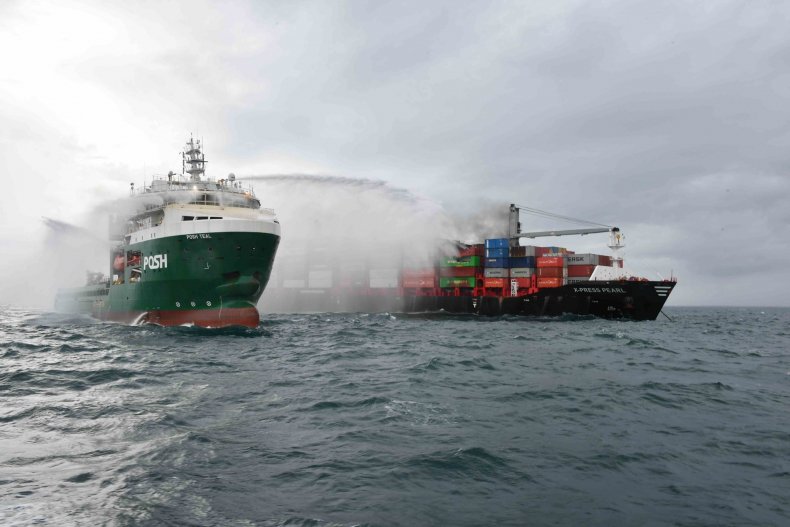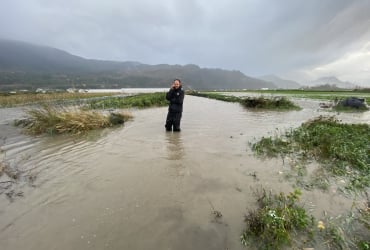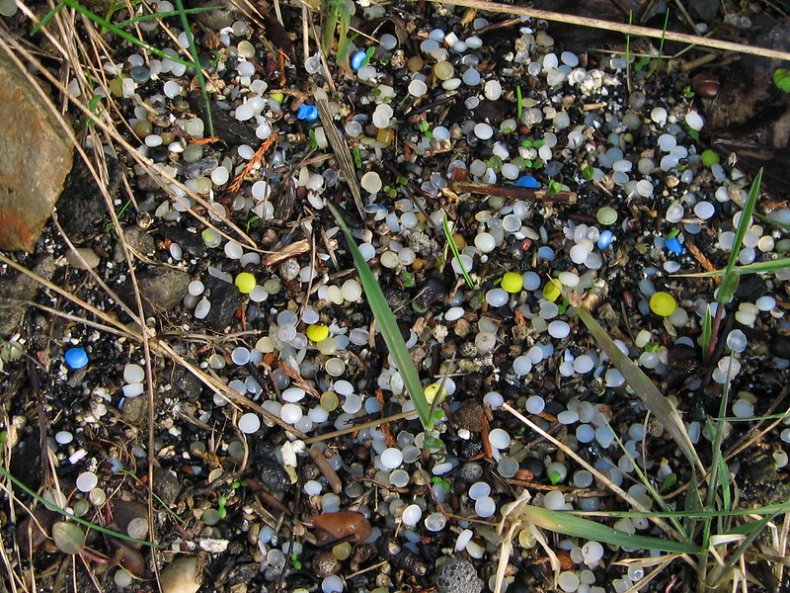This story was originally published by The Guardian and appears here as part of the Climate Table collaboration.
When the container ship X-Press Pearl caught fire and sank in the Indian Ocean in May, Sri Lanka He was terrified that the ship’s 350 tons of heavy fuel oil would spill into the ocean, causing an environmental disaster for the country’s pristine coral reefs and fishing industry.
Classified by the UN as Sri Lanka “Worst maritime disaster”, the major impact was not caused by heavy fuel oil. Neither were the dangerous chemicals on board, which included nitric acid, caustic soda and methanol. The most “significant” damage, according to the UN, came from the spill of 87 containers filled with plastic pellets the size of lentils: nurdles.

Since the disaster, billions of nurdles have accumulated along hundreds of miles of the country’s coastline, and are expected to do landing on the shores of the Indian Ocean from Indonesia and Malaysia to Somalia. In some places, they are up to two meters deep. They have been found in dead dolphin bodies and fish mouths. Approximately 1,680 tons of knuckles were dumped into the ocean. It is the largest plastic spill in history, according to the UN report.
Nurdles, the colloquial term for “pre-production plastic granules”, is the little-known building block for all of our plastic products. The small beads can be made of polyethylene, polypropylene, polystyrene, polyvinyl chloride, and other plastics. Released into the environment from plastic plants or when shipped around the world as raw material to factories, they will either sink or float, depending on the density of the pellets and whether they are in fresh or salt water.
They are often mistaken for food by seabirds, fish, and other wildlife. In the environment, they fragment into nanoparticles whose dangers are more complex. They are the second largest source of micropollutants in the ocean, by weight, after tire dust. A staggering 230,000 tons of knuckles end up in the oceans each year.
What people are reading

Like crude oil, nurdles are highly persistent pollutants and will continue to circulate in ocean currents and land on land for decades. They are also “Toxic sponges”, which attract chemical toxins and other contaminants on their surfaces.
“The granules themselves are a mixture of chemicals, they are fossil fuels,” says Tom Gammage of the Environmental Investigation Agency (EIA), an international campaign group. “But they act like toxic sponges. Many toxic chemicals, which in Sri Lanka’s case are already in the water, are hydrophobic. [repel water], so they accumulate on the surface of microplastics.
“Contaminants can be a million times more concentrated on the surface of the granules than in the water,” he says. “And we know from laboratory studies that when a fish eats a pellet, some of those contaminants are released.”
Billions of these tiny plastic granules float in the ocean and cause as much damage as oil spills, but they are not yet classified as dangerous. #Nurdles #PlasticWaste

Nurdles also act like “rafts” for harmful bacteria like E. coli or even cholera, according to a study, transporting them from sewage drains and agricultural runoff to bathing waters and shellfish farms. The phenomenon of “plastic rafting“is increasing.
However, nurdles, unlike substances like kerosene, diesel and gasoline, are not considered dangerous under the International Maritime Organization (IMO) dangerous goods code for safe handling and storage. This is despite the threat to the environment from plastic granules that has been known for three decades, as detailed in a 1993. US government Environmental Protection Agency report. on how the plastics industry could reduce spills.
Now, environmentalists are joining forces with the Sri Lankan government in an attempt to turn the X-Press Pearl disaster into a catalyst for change.
When IMO’s marine environment protection committee met in London this week, Sri Lanka’s call for knuckles to be classified as dangerous goods drew public support, with more than 50,000 people signing. a request. “There is nothing to stop what happened in Sri Lanka from happening again,” says Gammage.
Last year, there were at least two vinegar spills. In the North Sea, a broken container was lost on the MV Trans Carrier 10 tons of pellets, which reached the coasts of Denmark, Sweden and Norway. In South Africa, a spill occurred in August 2020 an accident in 2018, which affected up to 2,000 kilometers of coastline. Only 23 percent of the 49 tons spilled were recovered. In 2019, 342 containers of plastic pellets spill into the North Sea.
Awareness is growing about the enormous threat posed by tiny pellets. Last year, two environmental protesters in the US. Charged Under Louisiana State Law With “Terrorizing” A Plastics Industry Lobbyist when they left a box of nurdles outside their home as part of a campaign to prevent Taiwan-based Formosa Plastics from opening a factory in Louisiana.
The nurdles came from another Formosa plant in Texas, which had spilled large amounts of pellets into Lavaca Bay in the Gulf of Mexico (Formosa agreed to pay $ 50 million to settle a lawsuit for allegedly violating the Clean Water Act). The charges against the activists, which carried a 15-year prison term, were later dropped.
Such incidents can be prevented, activists say. “The sinking of the X-Press Pearl and the spillage of chemicals and plastic pellets into the seas of Sri Lanka caused incalculable damage to marine life and destroyed local livelihoods,” says Hemantha Withanage, director of the Center for the Environmental Justice in Sri Lanka. Consumption of fish, the main source of protein for 40 percent of Sri Lankans, has dropped dramatically, he says. “It was a big accident and, unfortunately, there is no guidance from IMO.”
Classifying nurdles as dangerous, such as explosives, flammable liquids and other substances harmful to the environment, would subject them to strict shipping conditions. “They should be stored below deck, in sturdier containers, with clear labels,” says Tanya Cox, a marine plastics specialist with the conservation charity Flora & Fauna International. “They would also be subject to disaster response protocols that can, if implemented in an emergency, prevent the worst environmental impacts.”
But the problem has been spoiled, and the IMO secretariat referred the problem to its Pollution Prevention and Response committee, which meets next year. Activists said it was disappointing that Sri Lanka’s proposal was not being adequately discussed. Christina Dixon of the EIA said: “The attitude of the committee members was extraordinary and showed an indifferent disregard for plastic pollution from ships as a threat to coastal communities, ecosystems and food security. This is simply unacceptable. “
Meanwhile, cleanup continues in Sri Lanka. Some of the 470 turtles, 46 dolphins and eight whales that make it to shore have had young on their bodies, Withanage says. While there is no proof that the knuckles were responsible, he says: “I have seen some dolphins and they had plastic particles inside them. There are 20,000 families who have had to stop fishing.
“Fishermen say when they bathe [themselves] in water, the granules get into the ears. It has affected tourism, everything ”.
Reference-www.nationalobserver.com